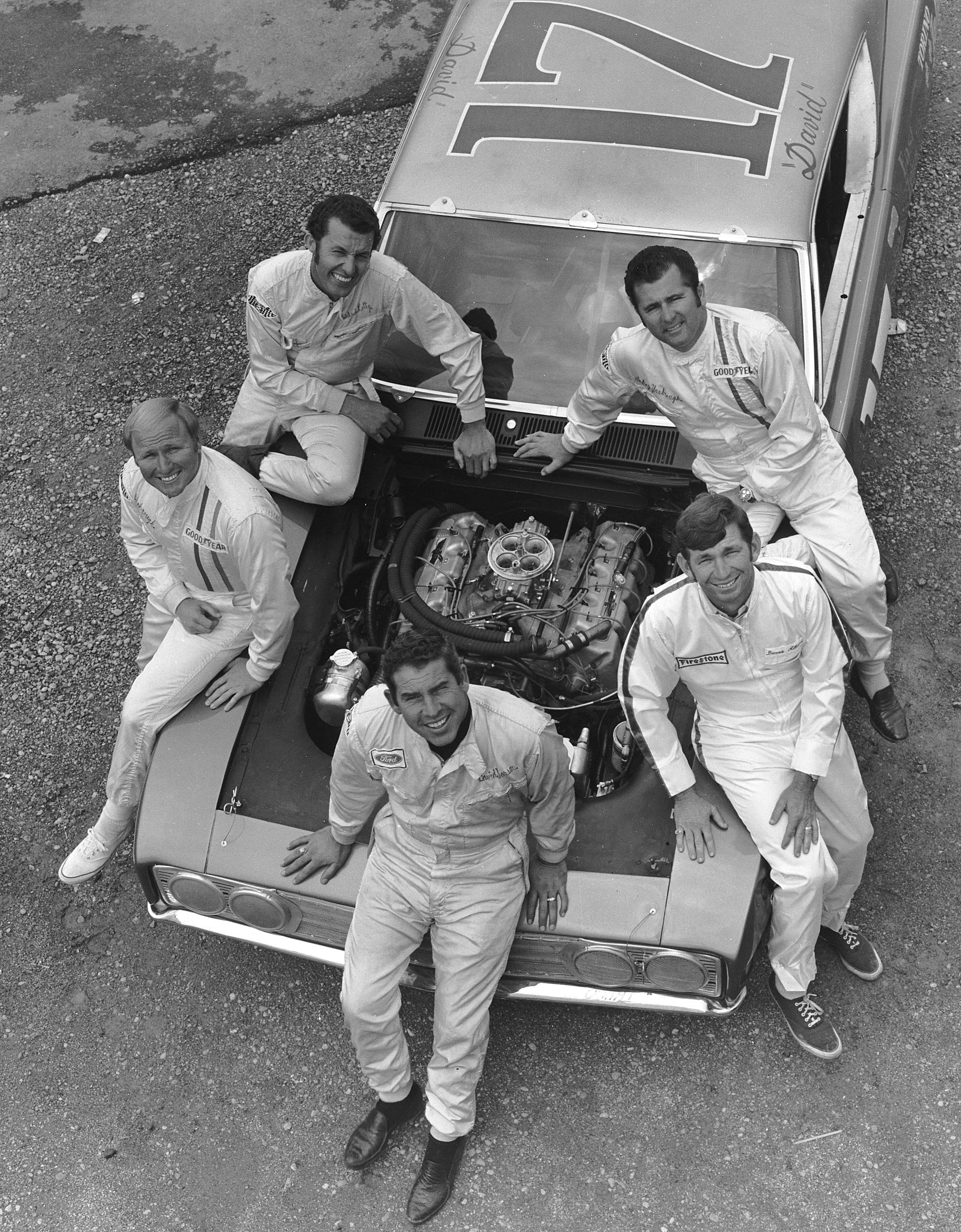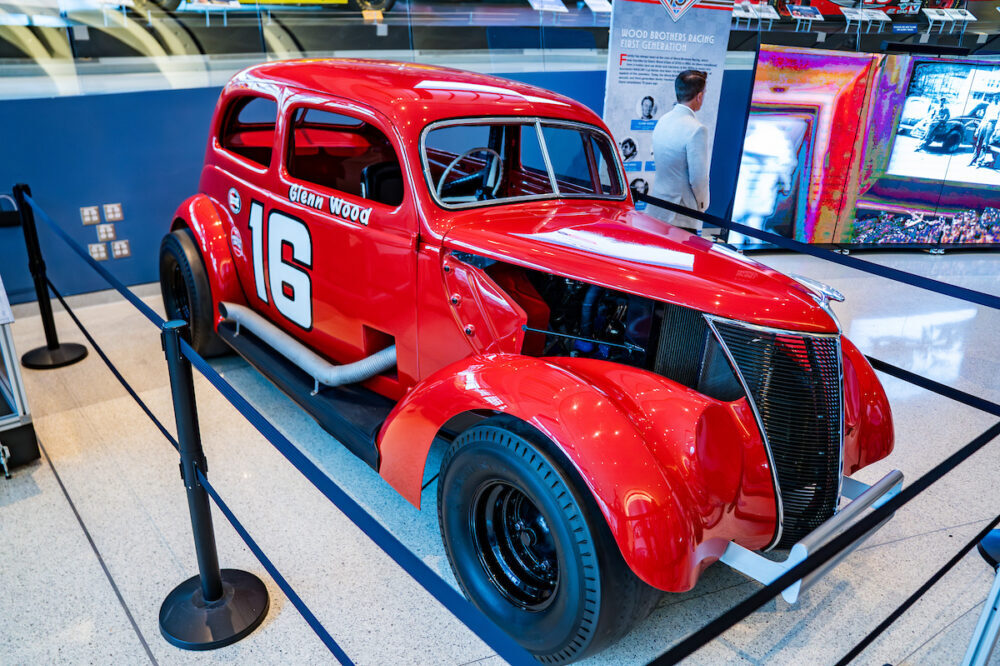Michigan Memories
by Tom Jensen August 04, 2022
In 1969, NASCAR raced at Michigan International Speedway for the first time. It’s been there ever since.
The 1969 NASCAR premier series season was a groundbreaking one on many fronts: Hall of Famer David Pearson (2011) won his third premier series championship and second in a row, Richard Petty (2010) shocked the world by switching from Plymouth to Ford and the automakers competing in the sport engaged in aerodynamic wars with special production models built specifically with NASCAR racing in mind.
More than anything, though, 1969 was the year of new tracks in NASCAR, four of which debuted that year - Michigan International Speedway, Dover Downs International Speedway (now Dover Motor Speedway), Alabama International Motor Speedway (now Talladega Superspeedway) and Texas World Speedway.
On Sunday, Michigan will host the FireKeepers Casino 400, which will be the track’s 105th premier series race.
But let’s flash back in time to the early days of Michigan International Speedway with some fun facts and trivia.

The 1969 Motor State 500 was Cale Yarborough’s second victory of 1969, both of them driving for the Wood Brothers Racing team out of Stuart, Virginia. Photo courtesy of NASCAR Archives & Research Center via Getty Images
First Winner
The first NASCAR premier series race at MIS was the Motor State 500 on June 15, 1969. It was all Hall of Famers up front, as Cale Yarborough (2011) won the race driving a Mercury owned by Glen Wood (2012) and Wood Brothers Racing and prepared by crew chief Leonard Wood (2013), Glen’s brother. Finishing second and third, respectively, were Pearson and Petty.

Ford Motor Co. had a powerhouse NASCAR driver lineup in 1969 with Cale Yarborough (clockwise from left), Richard Petty, LeeRoy Yarbrough, Donnie Allison and David Pearson. Photo courtesy of NASCAR Archives & Research Center via Getty Images
Automakers
The state of Michigan is home to Detroit’s Big Three automakers: General Motors, Ford Motor Co. and Chrysler Corp. In the NASCAR Hall of Fame’s Great Hall is an exhibit entitled, “Chevrolet: Winningest Brand in Cup Series History” and indeed, Chevrolets have won more NASCAR Cup races than any other brand.
But in 1969, neither Chevrolet nor any of the other GM division had a factory NASCAR program. In that first race at MIS, there were only four Chevrolet drivers in the 38-car field: E.J. Trivette finished 15th, Dick Poling was 25th, John Kennedy 26th and Wayne Gillette was 38th and last. If those names aren’t familiar, there’s a reason: None of the four ever had a top-five finish and Trivette was the only one to ever finish in the top 10. In the absence of any Chevrolet factory teams, the top four finishing spots at MIS all belonged to Ford Motor Co. drivers.

Keeping cars running for 500 long, fast miles was a big challenge for NASCAR teams in 1969. Photo courtesy of NASCAR Archives & Research Center via Getty Images
Atrocious Attrition
NASCAR race cars are exceptionally reliable from a mechanical standpoint these days. In 1969, not so much. In that first Motor State 500, just 16 of 38 cars were running at the finish. The bulk of the DNFs were the result of engine failures at the fast, high-banked 2.0-mile oval.

Donnie Allison (left) started on the pole for the Motor State 500, but Cale Yarborough won the race. Photo courtesy of NASCAR Archives & Research Center via Getty Images
Pole Speed
Not only are cars more reliable today, they’re much safer and much faster, too. Donnie Allison won the pole for the 1969 Motor State 500 at a speed of 160.135 mph. The current MIS track record belongs to Jeff Gordon (2019) who in 2014 put down a blistering qualifying lap of 206.558 mph.

Roger Penske’s business relationship with American Motors Corp. led the automaker to go NASCAR racing. Photo courtesy of NASCAR Archives & Research Center via Getty Images
More Money, More Problems
Two years after MIS hosted its first NASCAR race, its parent company went bankrupt. In 1973, Roger Penske (2019) purchased the track. In a brilliant business move, Penske leased the track to American Motors Corp., which on non-race weekends used the facility to do emissions testing on its production cars. Penske was also the first team owner to race AMC cars in NASCAR.
Under Penske’s ownership., the track’s seating capacity was expanded from 25,000 to 125,000 seats and numerous upgrades and improvements were added over the years. Today, the track is owned by NASCAR.
Plan your visit to the NASCAR Hall of Fame and purchase tickets by visiting nascarhall.com/tickets.













